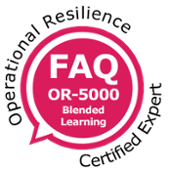A Strategic Approach to Evaluating and Enhancing Organisational Resilience: A Guide for Crisis Management Professionals
The Critical Role of Resilience Evaluation
 In today’s volatile business landscape, organisational resilience is no longer optional but a strategic imperative. Resilience enables organisations to anticipate disruptions, adapt to changing conditions, and recover swiftly while maintaining continuity. ISO 22316:2017 provides a structured framework for evaluating and strengthening resilience through systematic monitoring, assessment, and reporting.
In today’s volatile business landscape, organisational resilience is no longer optional but a strategic imperative. Resilience enables organisations to anticipate disruptions, adapt to changing conditions, and recover swiftly while maintaining continuity. ISO 22316:2017 provides a structured framework for evaluating and strengthening resilience through systematic monitoring, assessment, and reporting.
Understanding and implementing these principles for crisis management professionals ensures that resilience is not just a reactive measure but a proactive, embedded capability within the organisation. This expanded guide delves deeper into the key components of resilience evaluation, offering actionable insights for leadership and risk practitioners.
Section 1: Foundational Principles of Resilience Evaluation (6.1 General)
Why Evaluation Matters
Evaluation is the backbone of a robust resilience strategy. It provides:
- Intelligence – Real-time insights into how well resilience strategies align with organisational objectives.
- Decision Support – Data-driven guidance for leadership to prioritise improvements.
- Continuous Improvement – Identification of gaps and opportunities to strengthen resilience proactively.
Key Actions for Organisations
1. Establish Measurement Processes
- Implement systems to track resilience indicators (e.g., response times, recovery rates, stakeholder trust).
- Use dashboards or resilience scorecards to visualise performance.
2. Target Monitoring to Critical Attributes
- Focus on factors most relevant to the organisation (e.g., supply chain robustness, workforce adaptability, cybersecurity posture).
- Avoid generic metrics—customise based on industry and organisational priorities.
3. Assess Effectiveness Against Objectives
- Regularly compare resilience performance against predefined benchmarks.
- Adjust strategies based on evolving threats and opportunities.
Section 2: Organisational Requirements for Resilience Evaluation (6.2)
6.2.1 Performance Measurement & Monitoring
Selecting the Right Metrics
Resilience metrics should align with:
- Industry Standards – Regulatory requirements, sector-specific risks.
- Leadership Priorities – What does top management consider critical?
- Organisational Culture – Does the workforce embrace resilience as a shared responsibility?
Leveraging Existing Data Sources
Organisations already collect valuable data that can inform resilience assessments, such as:
- Internal Audits – Compliance gaps, risk exposures.
- Business Continuity Reports – Recovery time objectives (RTOs), incident response effectiveness.
- Employee & Customer Feedback – Sentiment analysis, engagement surveys.
Leadership’s Role in Resilience Evaluation
Top management must:
- Define Clear Resilience Objectives – What does success look like?
- Develop Measurement Frameworks – How will progress be tracked?
- Monitor Maturity Over Time – Is resilience improving, stagnating, or declining?
- Integrate with Existing Processes – Avoid silos by embedding resilience monitoring into enterprise risk management (ERM) and strategic planning.
6.2.2 Identifying and Addressing Resilience Gaps
Conducting a Baseline Assessment
Before implementing ongoing monitoring, organisations should:
- Perform an initial resilience maturity assessment (e.g., using ISO 22316’s attributes).
- Benchmark against peers or industry standards.
Key Questions for Leadership
- Does current resilience meet organisational needs?
- Where are the most significant vulnerabilities?
- What immediate actions are required to close gaps?
Strategies for Improvement
- Short-Term Fixes – Address critical vulnerabilities (e.g., IT redundancy, crisis communication training).
- Long-Term Enhancements – Cultural change, leadership commitment, and continuous learning.
Section 3: Monitoring and Assessment in Practice (6.3)
6.3.1 Methods and Processes for Effective Monitoring
Proactive vs. Reactive Monitoring
- Proactive – Early warning systems, trend analysis, predictive analytics.
- Reactive – Post-incident reviews, lessons-learned sessions.
Key Monitoring Techniques
1. Risk Management Integration
- Track how well risk mitigation strategies perform under stress.
- Example: If a supplier fails, how quickly can alternatives be activated?
2. Employee & Stakeholder Surveys
- Measure workforce confidence in crisis response capabilities.
- Assess customer trust during disruptions.
3. Data-Driven Resilience Assessments
- Use AI and machine learning to detect emerging risks.
- Example: Supply chain monitoring tools that predict bottlenecks.
6.3.2 The Importance of Periodic Reviews
When to Conduct Reviews?
- Scheduled – Quarterly, biannually, or annually.
- Trigger-Based – After major incidents, leadership changes, or market shifts.
What Should Reviews Cover?
- Changes in strategy, business model, or risk landscape.
- Effectiveness of previous resilience improvements.
- New regulatory or compliance requirements.
Leadership’s Role in Reviews
- Compare resilience data with audit findings, near-miss reports, and compliance checks.
- Ensure monitoring systems flag issues before they escalate.
Section 4: Reporting and Continuous Improvement (6.4)
Effective Reporting for Resilience Enhancement
What Should Reports Include?
- Trend Analysis – Are resilience metrics improving or declining?
- Benchmarking – How does the organisation compare to peers?
- Actionable Insights – Clear recommendations for leadership.
How Leadership Should Use Reports
- Track Progress – Are resilience initiatives delivering results?
- Validate Data Systems – Is the correct data being captured?
- Develop Action Plans – Prioritise investments in resilience upgrades.
Summing Up ... Building a Culture of Sustained Resilience
Resilience is not a one-time project but an ongoing organisational capability. By implementing structured evaluation processes—aligned with leadership priorities and integrated into existing workflows—crisis management professionals can ensure their organisations are prepared for known and unforeseen challenges.
Key Takeaways for Practitioners
- Measure What Matters – Focus on resilience attributes most critical to your organisation.
- Integrate with Risk & Strategy – Avoid silos by embedding resilience into broader governance.
- Act on Insights – Use data to drive decisions and continuous improvement.
- Engage Leadership – Ensure top management champions resilience as a strategic priority.
By adopting these principles, organisations can move from reactive crisis management to proactive resilience-building, ensuring long-term sustainability in an unpredictable world.
 Source: Adapted from ISO 22316:2017 Security and resilience — Organisational resilience — Principles and attributes
Source: Adapted from ISO 22316:2017 Security and resilience — Organisational resilience — Principles and attributes







![[BL-OR] [3-4-5] View Schedule](https://blog.bcm-institute.org/hs-fs/hubfs/hub_generated/resized/e4287b59-1a43-4e10-8e43-c73b27b3ca39.png?width=172&height=50&name=e4287b59-1a43-4e10-8e43-c73b27b3ca39.png)
![[BL-OR] [3] FAQ OR-300](https://blog.bcm-institute.org/hs-fs/hubfs/hub_generated/resized/294e989f-8613-4bf3-96a5-a89408cfb9ca.png?width=150&height=150&name=294e989f-8613-4bf3-96a5-a89408cfb9ca.png)
![Email to Sales Team [BCM Institute]](https://blog.bcm-institute.org/hs-fs/hubfs/hub_generated/resized/850988ce-aa7d-4953-95cf-797635341edd.png?width=100&height=100&name=850988ce-aa7d-4953-95cf-797635341edd.png)





